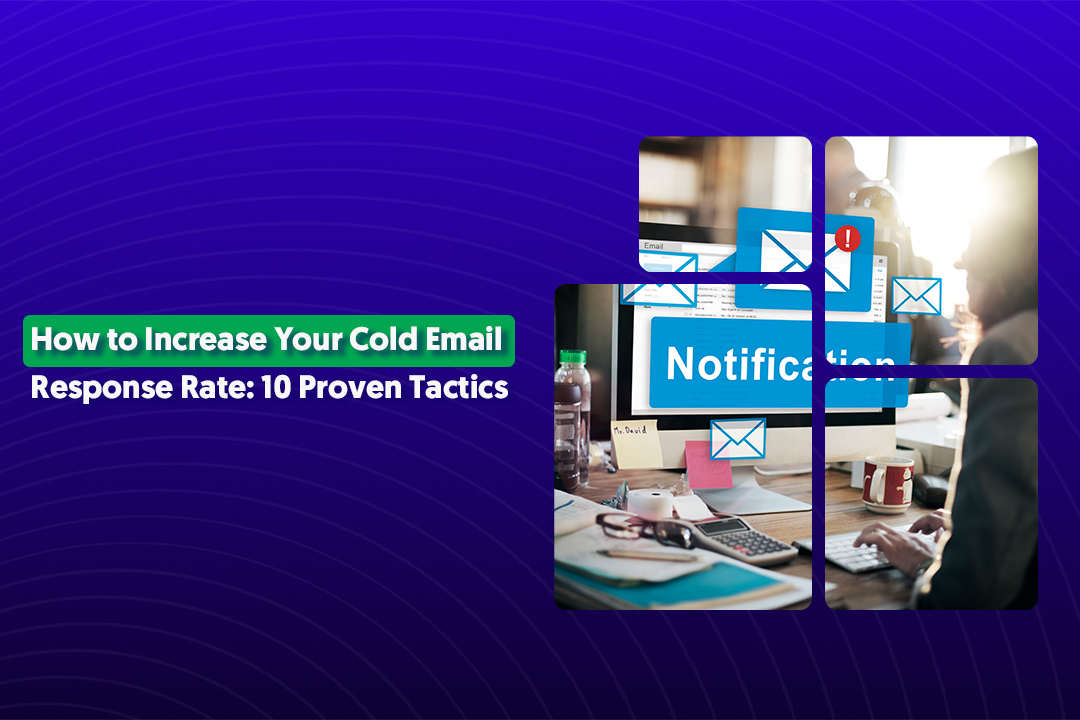Table of Content
Key Takeaways
- LinkedIn Boolean search uses operators like AND, OR, NOT, quotes, and parentheses to build precise searches.
- Layer Boolean logic with LinkedIn's filters (location, company size, industry) to create hyper-targeted prospect lists in minutes.
- Start broad, then refine. Test different query variations monthly and track metrics like connection acceptance rate and meetings booked.
- Avoid common mistakes: overly broad queries waste time, too many NOT filters shrink your list, and searches without follow-up generate zero results.
- Pair Boolean targeting with a compliant LinkedIn automation tool to scale outreach safely.
- Tack acceptance rates (30-40% is good), meeting bookings (5-10% conversion), and cost per lead to optimize over time.
LinkedIn Boolean search is probably the most underused superpower on the platform simply because the way you search LinkedIn makes or breaks your results in LinkedIn lead generation.
Here's the thing: most people just type a job title into the search bar and hope for the best. They're missing out on thousands of qualified prospects hiding in plain sight.
That's where Boolean search in LinkedIn comes in. It's a technique that lets you build precise, complex queries using operators like AND, OR, NOT, parentheses, quotes, and wildcards.
The problem? Too many teams still rely on basic searches and wonder why their outreach falls flat or their talent pool feels limited.
The solution? This guide breaks down everything you need to know about Boolean search in recruitment and sales. We'll cover:
- How each Boolean operator actually works (with real command breakdowns)
- 20+ Boolean search examples you can copy and customize today
- Workflow tips for LinkedIn automation tools that scale your prospecting
- Best practices to avoid common mistakes
By the end, you'll know exactly how to use LinkedIn Boolean search tools to uncover prospects your competitors are missing. Let's dive in.

What Is Boolean Search on LinkedIn?
Boolean search in LinkedIn is a method of combining keywords with specific operators to create highly targeted searches.
Think of it like building a custom filter. You're telling LinkedIn: "Show me people with this skill AND that title, but NOT from those companies."
It's precise, scalable, and way more effective than basic searching.
Definition & Logic Behind Boolean Operators
At its core, Boolean search in recruitment uses logical operators to connect or exclude search terms. Here's how each one works:
- AND – Narrows results by requiring all terms to appear. Example: "sales AND SaaS" only shows profiles mentioning both.
- OR – Expands results by including profiles with any of the terms. Example: "CEO OR founder OR president" casts a wider net.
- NOT – Excludes specific terms. Example: "marketing NOT agency" filters out agency professionals.
- Quotes ("") – Searches for exact phrases. Example: "demand generation manager" finds that exact title, not scattered words.
- Parentheses () – Groups terms to control search logic. Example: "(engineer OR developer) AND Python" ensures the skill applies to either role.
- Asterisk (*) – Acts as a wildcard for variations. Example: "market*" captures marketing, marketer, marketplace, etc.
These operators work together, so you can layer them to build incredibly specific queries.
How LinkedIn Supports Boolean Logic in Search Fields
LinkedIn lets you apply Boolean search across multiple fields, making it flexible for different prospecting needs:
- Keywords field – The main search bar where you can combine operators freely. This searches across headlines, job titles, skills, and profile summaries.
- Job title filter – Use Boolean logic here to target specific roles. Example: "VP OR Director" finds both levels at once.
- Company filter – Search current or past employers with OR to expand reach. Example: "Google OR Meta OR Amazon."
- Location filter – While you can't use Boolean here directly, you can select multiple locations to broaden geography.
The key is knowing where to use each operator. Most of your Boolean magic happens in the keywords field, but layering it with filters makes searches even sharper.
Why It's More Powerful Than Simple Keyword Search
You're competing with everyone else typing "software engineer" into the search bar and getting the same generic results.
Boolean search examples let you:
- Discover hidden profiles
- Refine targeting with surgical precision
- Save hours of manual filtering
- Scale smarter prospecting
Bottom line: If you're still doing basic searches, you're leaving money (and great prospects) on the table. Boolean search in LinkedIn gives you the edge to find people others can't—and do it faster.
Boolean Search Commands & Syntax You Must Know
Let's break down the exact commands you'll use in Boolean search examples.
Once you understand these operators, you can mix and match them to build searches that feel like custom-built filters.
Basic Operators Explained
These three operators are the foundation of every LinkedIn Boolean search:
AND – Use this when you need all terms to appear in a profile. It narrows your results by requiring every keyword.
Example: product manager AND B2B AND fintech
This finds product managers who specifically work in B2B fintech companies. If a profile doesn't mention all three, it won't show up.
OR – Use this when you want profiles that match any of your terms. It broadens your search by including variations.
Example: recruiter OR "talent acquisition" OR "people operations"
This captures professionals who use different titles for similar roles. You're casting a wider net without losing relevance.
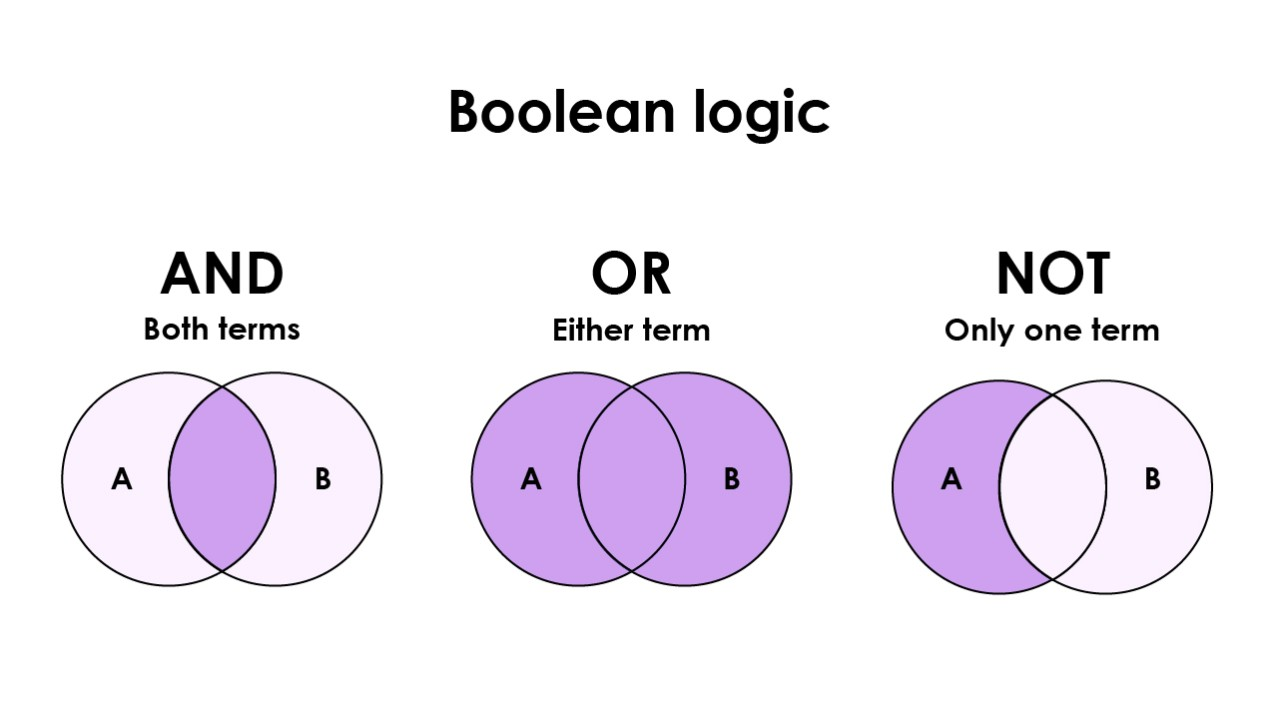
NOT – Use this to exclude unwanted terms. It's perfect for filtering out industries, roles, or companies you don't want.
Example: developer NOT intern NOT junior
This eliminates entry-level profiles, so you only see experienced developers.
Grouping with Parentheses
Parentheses let you control the order of operations in your search—just like math class. They're essential when you're combining AND/OR logic in one query.
Example: ("marketing manager" OR "growth lead") AND (SaaS OR software)
Here's what this does:
- First, LinkedIn looks for profiles with either "marketing manager" OR "growth lead"
- Then, it filters those results to only show people who also mention SaaS or software
Without parentheses, LinkedIn might misinterpret your intent and give you messy results. Grouping makes your Boolean search in recruitment crystal clear.
Pro tip: Always put your OR terms in parentheses when mixing them with AND. It prevents logic errors.
Quotation Marks for Exact Phrase
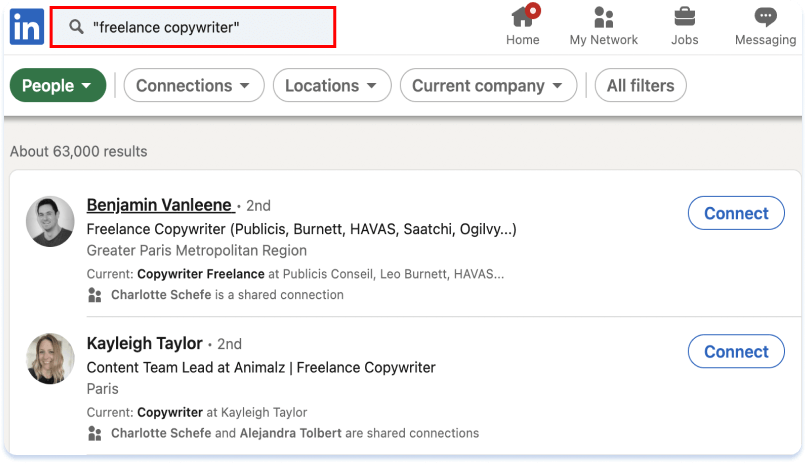
When you need LinkedIn to search for an exact phrase—word for word, in that specific order—use quotation marks.
Example: "customer success manager"
Without quotes, LinkedIn might show you:
- Customer service reps
- Account managers
- Success consultants
With quotes, you only get profiles where "customer success manager" appears as an exact match. This is a game-changer for title-specific searches.
When to use it:
- Job titles with multiple words: "vice president of sales"
- Specific certifications: "PMP certified"
- Exact company names: "Goldman Sachs"
Wildcards and Truncation
LinkedIn doesn't officially support the asterisk (*) wildcard in all search fields, but you can simulate it by listing variations with OR.
Example of what wildcards would do: market* → captures marketing, marketer, marketplace, markets
How to work around it on LinkedIn:
marketing OR marketer OR "market research" OR marketplace
It's more manual, but it gets the job done. The key is thinking through all the keyword variations your ideal prospect might use.
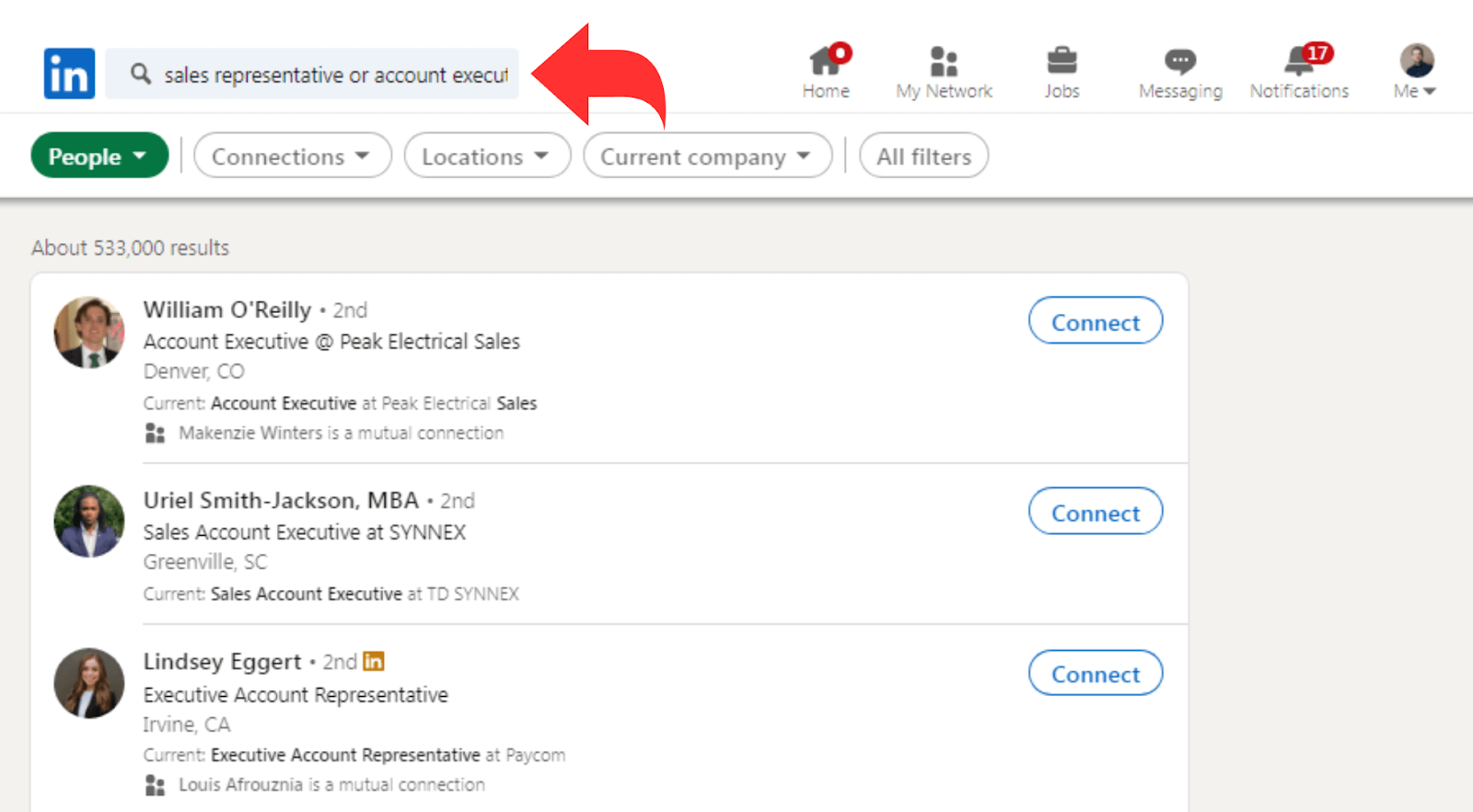
Pro tip: Use this approach for international spelling differences too—like optimise OR optimize for global searches.
Nesting Complex Queries for Precision
Once you're comfortable with the basics, you can nest multiple layers of logic to build ultra-precise searches. This is where Boolean search examples get powerful.
Example: (CEO OR founder OR "co-founder") AND ("e-commerce" OR retail OR DTC) NOT (Amazon OR Walmart)
Let's unpack this:
- First layer: Find executives (CEO, founder, co-founder)
- Second layer: In e-commerce, retail, or direct-to-consumer spaces
- Third layer: Exclude people from Amazon or Walmart
This kind of query is perfect when you have very specific ideal customer profiles (ICPs) and want to avoid wasting time on irrelevant prospects.
Boolean Search Cheat Sheet
Here's a quick-reference table you can bookmark:

Quick tip: Save your best-performing queries in a doc. Once you nail a search string for a specific persona, you can reuse and tweak it for future campaigns. Pair these with a LinkedIn automation tool, and you've got a scalable LinkedIn prospecting machine.
20+ LinkedIn Boolean Search Examples for Recruitment & Lead Gen
Here's where theory meets practice. We've built out Boolean search in recruitment and sales strings you can copy, paste, and customize today.
Each example is designed for a specific use case, so you can find the right prospects faster.
Use Case 1: Recruitment Searches

These queries help you find qualified candidates with specific skills, experience levels, and backgrounds.
1. Software Engineers with React Experience
("software engineer" OR developer OR "full stack") AND (React OR JavaScript OR TypeScript) NOT (intern OR junior OR student)
What it does: Finds experienced engineers skilled in modern JavaScript frameworks, filtering out entry-level candidates.
Tweak it: Swap "React" for "Angular" or "Vue" depending on your tech stack.
2. Senior Product Managers in B2B SaaS
("product manager" OR "senior product manager" OR "lead product manager") AND (B2B OR SaaS OR "enterprise software") NOT agency
What it does: Targets seasoned PMs with B2B SaaS experience, excluding agency workers.
Tweak it: Add AND ("product-led growth" OR PLG) to find growth-focused PMs.
3. Data Scientists with AI/ML Background
("data scientist" OR "machine learning engineer" OR "AI researcher") AND (Python OR TensorFlow OR PyTorch) AND ("PhD" OR "Master's")
What it does: Surfaces advanced data professionals with academic credentials and key technical skills.
Tweak it: Remove degree filters if you're open to self-taught candidates.
4. DevOps Engineers with Cloud Certifications
("DevOps engineer" OR "site reliability engineer" OR SRE) AND (AWS OR Azure OR GCP) AND (certified OR certification)
What it does: Finds DevOps pros with verified cloud platform expertise.
Tweak it: Add AND Kubernetes or AND Docker for container experience.
5. Executive Assistants in Tech
("executive assistant" OR "chief of staff" OR "EA to CEO") AND (startup OR tech OR SaaS) NOT (virtual OR freelance)
What it does: Targets EAs with tech industry experience, excluding remote contractors.
Tweak it: Add AND ("calendar management" OR "travel coordination") for specific skills.
Use Case 2: Sales & Lead Generation Searches
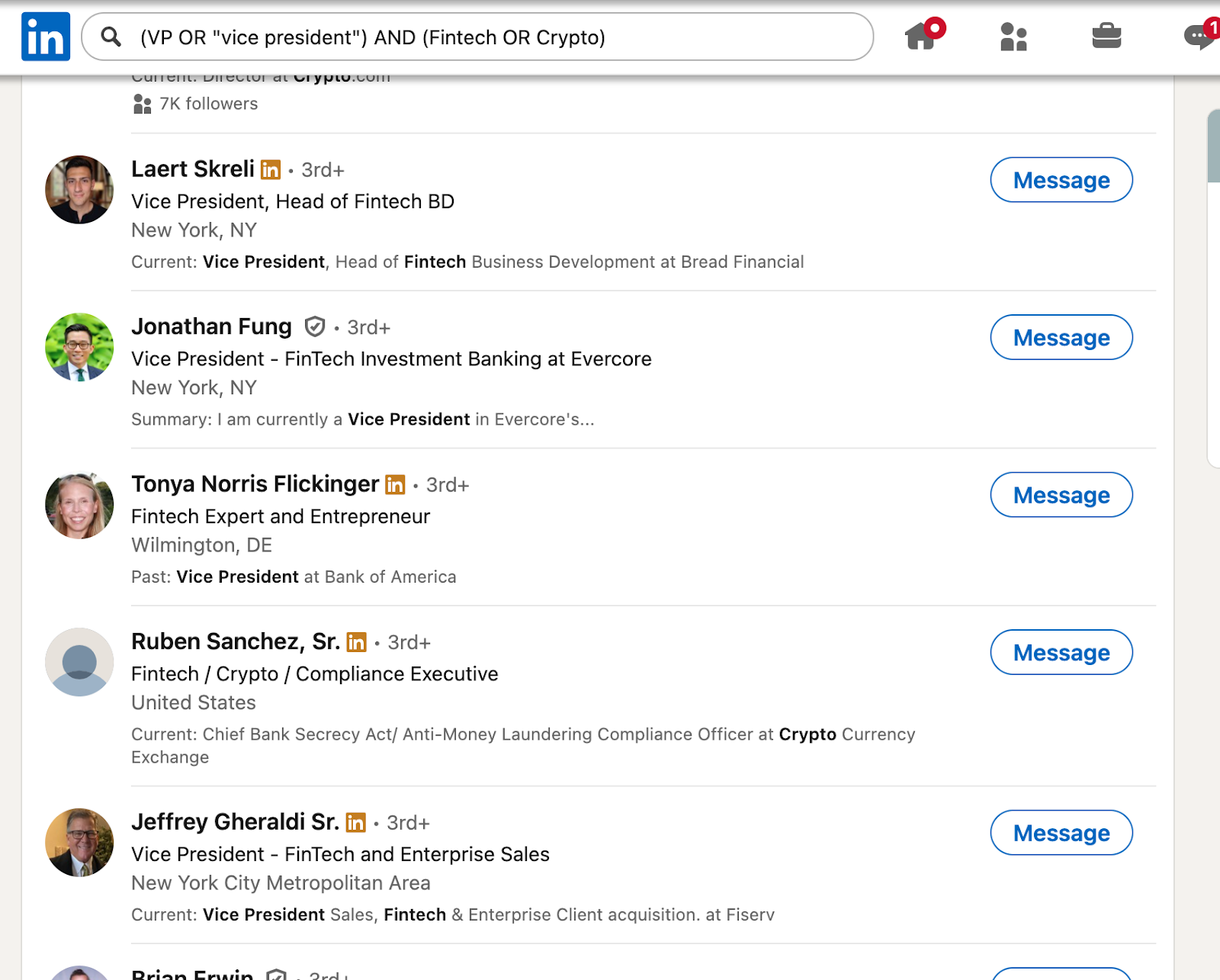
These strings help you identify decision-makers and prospects in your target market.
6. VP-Level Sales Leaders in SaaS
("VP Sales" OR "Vice President of Sales" OR "Head of Revenue" OR CRO) AND (SaaS OR "software as a service" OR B2B) NOT consultant
What it does: Finds senior sales executives at software companies, excluding consultants.
Tweak it: Add AND (series A OR series B OR "funded") to target startups at specific stages.
7. Marketing Directors with ABM Experience
("marketing director" OR "director of marketing" OR CMO) AND (ABM OR "account-based marketing" OR "demand generation") AND B2B
What it does: Identifies marketing leaders who run account-based strategies in B2B companies.
Tweak it: Add AND (HubSpot OR Marketo OR "marketing automation") to find tool-specific users.
8. Founders in E-commerce
(founder OR CEO OR "co-founder") AND ("e-commerce" OR DTC OR "direct to consumer" OR Shopify) NOT (Amazon OR Walmart)
What it does: Targets startup founders in e-commerce, excluding marketplace sellers.
Tweak it: Add AND ("seed funded" OR "venture backed") for funded companies.
9. HR Leaders at Mid-Market Companies
("VP HR" OR "VP People" OR "Chief People Officer" OR CHRO) AND (500..5000 employees)
What it does: Finds HR executives at companies between 500-5,000 employees (use LinkedIn's employee count filter).
Tweak it: Adjust employee range based on your ICP.
10. IT Decision-Makers in Healthcare
(CIO OR "Chief Information Officer" OR "VP IT" OR "IT Director") AND (healthcare OR hospital OR "medical device" OR pharma)
What it does: Surfaces tech leaders in healthcare organizations.
Tweak it: Add AND (cybersecurity OR "data privacy" OR HIPAA) for compliance-focused buyers.
11. CFOs at High-Growth Startups
(CFO OR "Chief Financial Officer" OR "VP Finance") AND (startup OR "series B" OR "series C" OR "high growth")
What it does: Targets lead gen for finance leaders at scaling companies.
Tweak it: Add AND ("venture capital" OR VC OR "private equity") for fundraising-focused CFOs.
12. Operations Leaders in Logistics
("VP Operations" OR "Director of Operations" OR COO) AND (logistics OR "supply chain" OR warehousing OR "3PL")
What it does: Finds ops executives in logistics and supply chain companies.
Tweak it: Add AND (WMS OR TMS OR "warehouse management") for software buyers.
Use Case 3: Industry-Specific Searches

Niche down by vertical to find highly relevant prospects.
13. Data Scientists in FinTech
("data scientist" OR "data analyst" OR "quantitative analyst") AND (FinTech OR "financial services" OR banking) AND ("machine learning" OR AI OR Python)
What it does: Targets data pros in financial technology with ML skills.
Tweak it: Add AND ("risk modeling" OR "fraud detection") for specialized roles.
14. Sales Reps in Cybersecurity
("sales representative" OR "account executive" OR AE) AND (cybersecurity OR "information security" OR infosec OR "cyber security")
What it does: Finds salespeople with cybersecurity product experience.
Tweak it: Add AND (SIEM OR firewall OR "endpoint security") for specific product lines.
15. Content Marketers in B2B SaaS
("content marketing" OR "content strategist" OR "content manager") AND (B2B OR SaaS OR "enterprise software") NOT agency
What it does: Identifies in-house content marketers at software companies.
Tweak it: Add AND (SEO OR "thought leadership" OR "demand gen") for specific skills.
16. Procurement Managers in Manufacturing
("procurement manager" OR "purchasing manager" OR "supply chain manager") AND (manufacturing OR industrial OR automotive)
What it does: Targets procurement decision-makers in manufacturing sectors.
Tweak it: Add AND (ERP OR SAP OR Oracle) to find users of specific systems.
17. Real Estate Investors
("real estate investor" OR "property investor" OR "real estate developer") AND (multifamily OR commercial OR "rental property") NOT agent
What it does: Finds actual investors, excluding real estate agents.
Tweak it: Add AND ("cash flow" OR syndication OR "passive income") for specific strategies.
Diver Deeper Into: Proven Real Estate Lead Generation Strategies and Tips
Use Case 4: Geographic & Remote Filters
Combine location with role and work arrangement for hyper-local or distributed searches.
18. Remote Marketing Managers on West Coast
("marketing manager" OR "senior marketing manager") AND (remote OR "work from home") AND ("San Francisco" OR "Los Angeles" OR Seattle OR Portland)
What it does: Finds marketing managers open to remote work in West Coast cities.
Tweak it: Remove city names and add AND "United States" for nationwide remote searches.
19. New York-Based Sales Leaders (On-Site)
("VP Sales" OR "Sales Director") AND "New York" NOT (remote OR virtual OR freelance)
What it does: Targets sales leaders based in NYC who work on-site.
Tweak it: Change city name for other metro areas.
20. Contract Designers in Tech Hubs
(designer OR "graphic designer" OR "UX designer") AND (contract OR freelance OR consultant) AND ("San Francisco" OR Austin OR "New York" OR Boston)
What it does: Finds freelance designers available in major tech cities.
Tweak it: Add AND (Figma OR Sketch OR Adobe) for tool-specific searches.
21. Remote Software Engineers in Europe
("software engineer" OR developer) AND remote AND (Germany OR "United Kingdom" OR France OR Netherlands OR Spain)
What it does: Targets remote engineers open to working from European countries.
Tweak it: Narrow to specific cities like AND (Berlin OR London OR Amsterdam).
22. Account Executives in Chicago (Hybrid)
("account executive" OR AE OR "sales representative") AND Chicago AND (hybrid OR "in-office")
What it does: Finds sales reps in Chicago open to hybrid work models.
Tweak it: Add AND SaaS to narrow by industry.
How to Adapt & Optimize These Searches
Wildcards workaround: Since LinkedIn doesn't fully support asterisks, list variations manually. Instead of market*, use (marketing OR marketer OR marketplace).
Combine with LinkedIn filters: After running your Boolean query in the keyword field, layer on LinkedIn's built-in filters:
- Company size (startup vs. enterprise)
- Industry tags (more precise than keywords alone)
- Years of experience (filter by seniority without keyword guessing)
- Current company (use OR logic: "Google OR Meta OR Amazon")
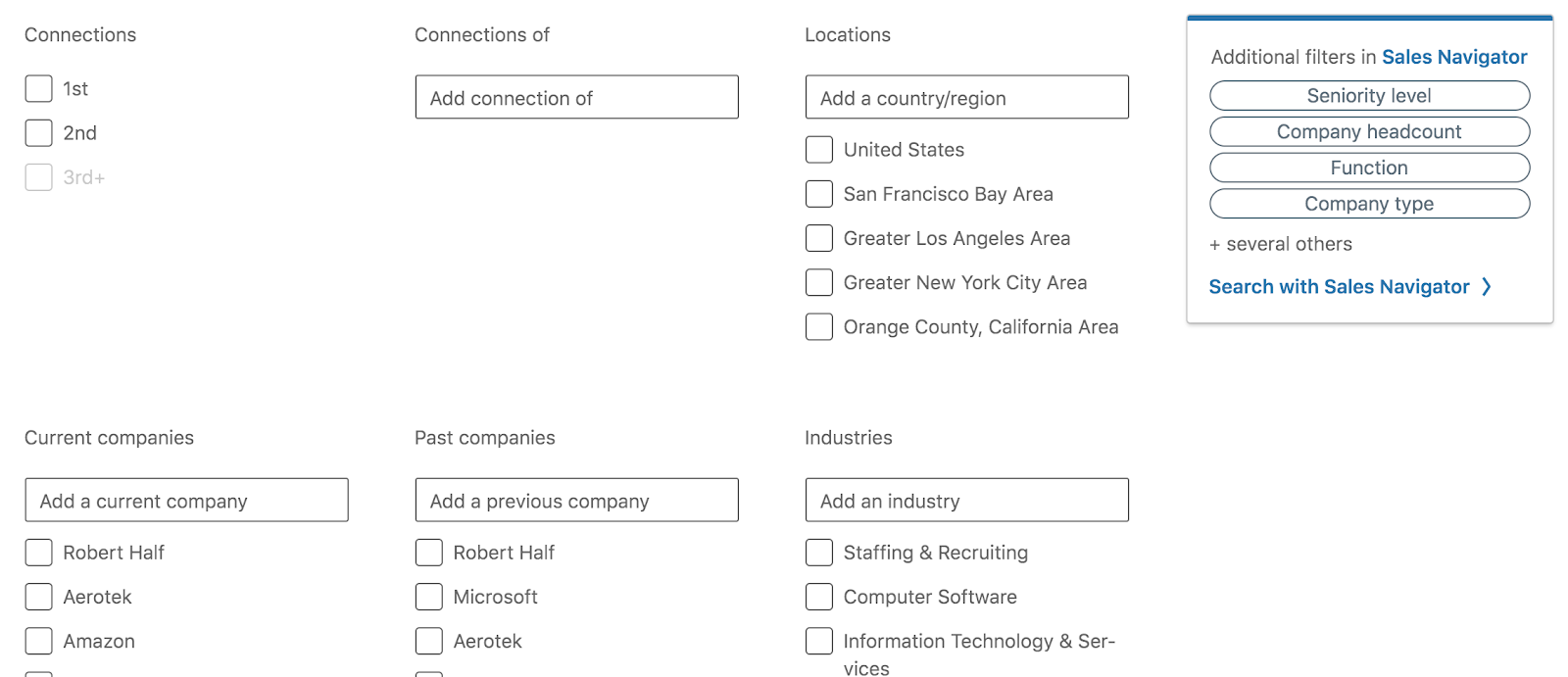
Sales Navigator advantage: If you're using LinkedIn Sales Navigator, you get access to more granular filters like:
- Job function (e.g., Engineering, Sales, Marketing)
- Seniority level (Director, VP, C-level)
- Years in current position (find people likely to move soon)
Explore More: Exact LinkedIn Sales Navigator Lead Workflow We Use to Book High-Quality B2B Meetings
Combine your Boolean search examples with these filters, and you'll build prospect lists that feel custom-tailored to your ICP.
Best Practices & Mistakes to Avoid in LinkedIn Boolean Search
Mastering LinkedIn Boolean search isn't just about knowing the syntax—it's about using it strategically. Here's how to get the most out of your searches without wasting time or risking your account.
Best Practices for Smarter Searches
✅ Start broad, then refine
Don't try to build the perfect query on your first attempt. Start with a simple search like "sales director" AND SaaS, see what comes up, then tighten it based on the results.
If you're getting too many irrelevant profiles, add more AND operators or NOT filters. If your list is too small, swap some AND operators for OR to cast a wider net.
✅ Combine multiple filter types
LinkedIn Boolean search works best when you layer Boolean logic with LinkedIn's built-in filters. Here's the power combo:
- Keyword field: Your Boolean query (("marketing manager" OR "growth lead") AND B2B)
- Location filter: Narrow by city, state, or country
- Current company filter: Target or exclude specific employers
- Industry filter: Focus on verticals like SaaS, healthcare, finance
- Connection level: Choose 2nd or 3rd connections to expand reach
Using all of these together gives you laser-focused results that basic searches can't touch.
✅ Review and adjust based on results
After you run a search, scroll through the first 10-20 profiles. Are they actually your target audience? If not, your logic probably needs tweaking.
Common fixes:
- Too many consultants or freelancers? Add NOT (consultant OR freelance OR contractor)
- Wrong seniority level? Add NOT (intern OR junior OR entry-level) or NOT (VP OR director) depending on your needs
- Profiles from irrelevant industries? Add NOT (agency OR retail OR nonprofit) based on what you're seeing
The goal is an 80/20 rule: 80% of your results should be qualified prospects. If you're below that, keep refining.
✅ Save your searches and set alerts
Once you nail a query, don't let it disappear. LinkedIn lets you save searches so you can re-run them anytime—and even better, you can set up alerts to notify you when new profiles match your criteria.
Here's why this matters: people update their LinkedIn profiles constantly. New hires, promotions, job changes—all of these create fresh opportunities.
By saving your Boolean search in recruitment queries and turning on alerts, you're building an always-on prospecting engine.
Common Mistakes That Kill Your Results
❌ Overly broad queries
One of the biggest mistakes we see is searches like marketing AND SaaS. Sure, you'll get results—thousands of them. But most won't be relevant.
The problem: no specificity. You're pulling in marketing interns, agency contractors, junior coordinators, and people who mentioned "SaaS" once in a blog post three years ago.
The fix: Add role specificity and exclusions. Change it to:
("marketing manager" OR "marketing director") AND (SaaS OR B2B) NOT (agency OR intern OR coordinator)
❌ Using too many NOT filters
On the flip side, some people go overboard with exclusions and end up with a list of 12 people.
If you're adding five or six NOT operators, you've probably gone too narrow.
The fix: Step back and ask, "Am I excluding entire groups I should be considering?" For example, NOT agency might filter out great prospects who recently moved in-house. Use NOT filters sparingly—only for deal-breakers like NOT intern or NOT retired.
❌ Running queries without follow-up
Here's the harsh truth: building a perfect prospect list means nothing if you don't reach out.
We've seen teams spend hours crafting Boolean search examples, export hundreds of profiles, and then... let them sit in a spreadsheet.
The fix: Treat search as step one in a workflow. Once you have your list:
- Export to a CRM or outreach tool
- Write personalized connection requests or InMails
- Follow up consistently (we recommend 3-5 touchpoints)
- Track what's working and iterate
Might Help: Top 10 LinkedIn AI Tools to Boost Your Networking & Lead Gen
❌ Ignoring LinkedIn's usage limits
LinkedIn has strict policies around automated activity and excessive searching. If you're running dozens of searches per day, sending 100+ connection requests, or scraping profiles aggressively, you're asking for trouble.
Potential consequences:
- Search restrictions (LinkedIn limits how many results you can view)
- Account warnings or temporary suspensions
- Permanent bans for repeat offenders
The fix: Pace yourself. Stick to reasonable daily limits:
- Searches: 10-15 per day is safe
- Profile views: 50-100 per day depending on account type
- Connection requests: 20-30 per day max (especially for free accounts)
- InMails: If you have Sales Navigator, use your monthly credits strategically
At Cleverly, we've helped thousands of clients automate LinkedIn outreach without risking their accounts—because we know how to stay compliant.
Pro tip: Spread your activity throughout the day instead of doing everything in one burst. LinkedIn's algorithms look for patterns, and sudden spikes in activity trigger red flags.
Measuring Success of Your Boolean-Driven Outreach
Finding the right prospects with LinkedIn Boolean search is only half the battle. The real question is: are your searches actually turning into conversations, meetings, and revenue?
Here's how to measure what's working and optimize your outreach over time.
Key Metrics to Track
If you're not measuring these numbers, you're flying blind. Here are the metrics that matter most for Boolean-driven prospecting:
Connection request acceptance rate
This tells you if you're targeting the right people and if your message resonates. Calculate it by dividing accepted requests by total requests sent.
InMail reply rate
If you're using Sales Navigator and sending InMails, track how many recipients respond. This is a direct indicator of message quality and targeting accuracy.
Check This Out: High-Converting LinkedIn InMail Templates to Boost Your Outreach Success
Meetings booked
At the end of the day, this is what drives business. How many of your accepted connections or InMail replies turn into actual calendar invites?
Pipeline created
Track the dollar value of opportunities generated from LinkedIn outreach. This requires tagging leads in your CRM based on source.
Cost per lead
If you're using paid tools like Sales Navigator or a LinkedIn automation tool, calculate your monthly spend divided by qualified leads generated.
What Good Looks Like: Benchmarks for Sales & Lead Gen Teams
Here are typical performance ranges we see across thousands of outreach campaigns:
Important context: These numbers vary by industry, deal size, and seniority of prospects. Reaching C-level executives will have lower acceptance rates but higher deal values. SDRs prospecting into mid-market will see higher volume but smaller deals.
If your numbers are in the "needs work" column, start by auditing your Boolean queries and outreach messages before assuming LinkedIn doesn't work.
A/B Testing Your Way to Better Results
The best teams don't just run one Boolean query and call it done. They test variations systematically to find what performs best.
Test different query strings
Run two versions of the same search and track which one produces better-quality leads:
- Version A: ("sales director" OR "VP sales") AND SaaS NOT consultant
- Version B: ("head of sales" OR "revenue leader") AND (B2B OR "enterprise software") NOT agency
Send similar messages to both groups and compare acceptance rates and meeting bookings. The winning query becomes your new baseline.
Test message hooks
Keep your Boolean query the same but vary your connection request or InMail intro:
- Hook A: "Hey [Name], saw you're leading sales at [Company]. We're helping similar B2B teams cut acquisition costs by 30%—worth a quick chat?"
- Hook B: "Hey [Name], noticed [Company] just raised Series B. Curious how you're scaling outbound as you grow the team?"
Track which hook gets more replies. Small changes in messaging can swing acceptance rates by 10-20 percentage points.
Test timing
Try sending connection requests at different times:
- Morning batch (8-10 AM local time)
- Lunch batch (12-1 PM)
- Evening batch (5-7 PM)
Some personas check LinkedIn first thing in the morning. Others browse during lunch or after work. Testing timing helps you catch people when they're most responsive.
Most LinkedIn automation platforms let you schedule A/B tests automatically and show you real-time performance data. This makes testing way easier than doing it manually.
Monthly Cadence for Analyzing & Refining
Here's a simple monthly routine to keep your Boolean searches sharp and your pipeline growing:
Week 1: Review last month's metrics
Pull your numbers:
- How many searches did you run?
- What was your overall acceptance rate?
- How many meetings were booked?
- What was your cost per lead?
Identify your best-performing and worst-performing queries. Look for patterns—maybe FinTech prospects respond way better than healthcare, or directors engage more than VPs.
Week 2: A/B test one variable
Pick one thing to test this month—either a new Boolean query variation, a different message hook, or adjusted timing. Run the test for 2-3 weeks to get statistically meaningful results.
Don't test multiple things at once. If you change both your query AND your message, you won't know which one moved the needle.
Week 3: Refine underperforming searches
Look at searches with low acceptance or reply rates. Common fixes:
- Add NOT filters to remove irrelevant profiles
- Swap AND for OR to broaden reach if lists are too small
- Layer in additional LinkedIn filters (company size, years of experience)
- Check if your target persona has shifted (maybe your ICP changed and your searches didn't)
Make adjustments and re-run the search. Compare new results against old benchmarks.
Week 4: Scale what's working
Double down on winning queries. If a specific Boolean string consistently delivers 40%+ acceptance rates and strong pipeline, build more variations of it:
- Test it in adjacent industries
- Expand to new geographies
- Try slightly different seniority levels
The goal is to find 3-5 proven Boolean formulas that become your outreach engine.
How Cleverly Leverages Boolean Search + Automation for Lead Generation
Boolean search gives you the right audience. A LinkedIn automation tool turns that audience into actual conversations.
But doing both well—consistently, at scale, without getting your account flagged—requires a proper LinkedIn lead gen engine.
That's exactly what we've built at Cleverly.
We combine precision Boolean targeting with smart automation to generate qualified leads on autopilot. Here's how it works and what kind of results you can expect.
The Cleverly Approach: Boolean + Automation = Pipeline
Most teams do one of two things wrong:
- They build perfect Boolean queries but manually send 20 connection requests per day (way too slow to scale)
- They automate outreach but use terrible targeting, so they're spamming irrelevant people at volume
We do both right. Boolean search identifies your ideal prospects. Automation handles outreach, follow-ups, and tracking—so your team focuses on closing deals, not clicking buttons.
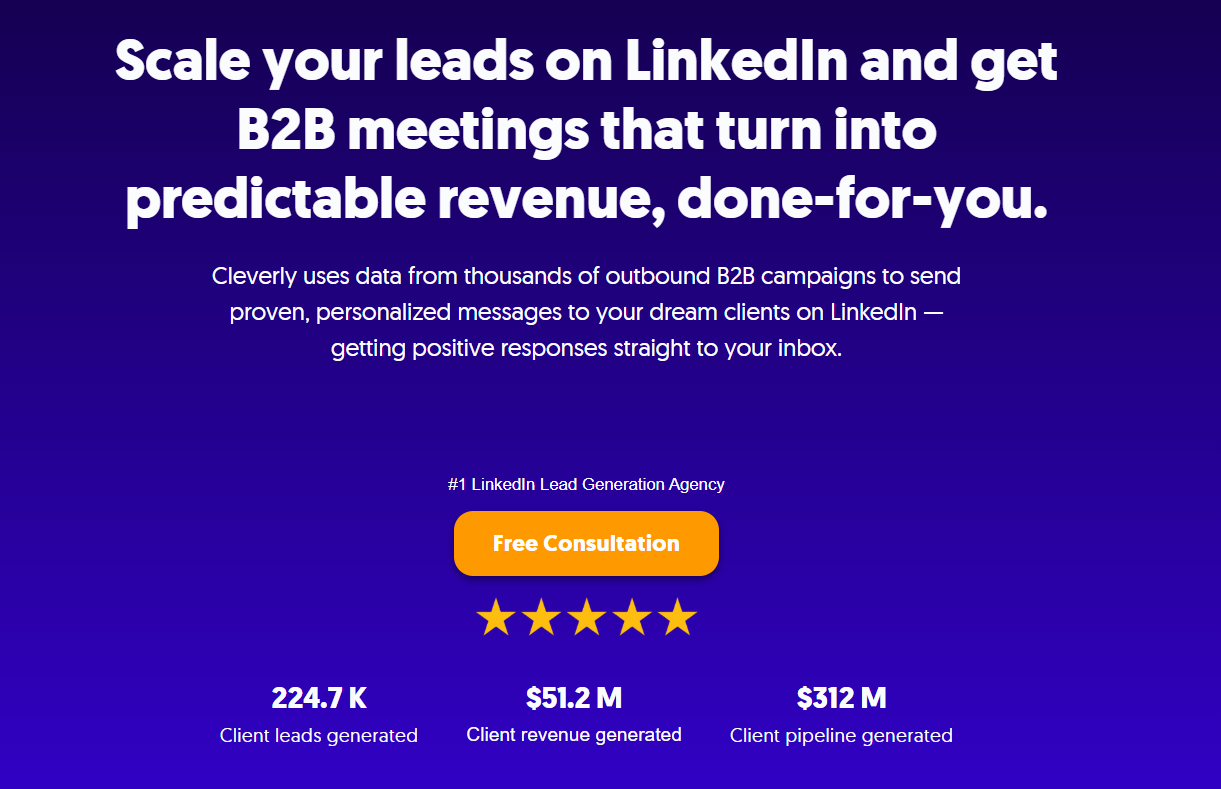
The Cleverly Difference
We've helped 10,000+ clients generate leads with companies like Amazon, Google, Uber, PayPal, Slack, and Spotify.
… That's resulted in $312 million in pipeline revenue and $51.2 million in closed deals.
We handle the search. We handle the sequences. We handle the conversion tracking. You just take the meetings.
Want Boolean-driven prospecting executed end-to-end?
Let Cleverly's team build your queries, automate your outreach, and fill your calendar with qualified prospects.
Get started with Cleverly today

Conclusion
LinkedIn Boolean search isn't just a nice-to-have skill—it's the difference between scrolling through thousands of irrelevant profiles and finding exactly who you need in minutes.
You now have the operators, the syntax, 20+ ready-to-use queries, and the best practices to build targeted prospect lists that actually convert.
But here's the thing: finding the right people is step one. Turning those searches into conversations, meetings, and revenue? That's where automation and strategy come in.
Start testing your Boolean queries today. Refine them monthly. Measure what works.
And if you want to skip the trial-and-error and go straight to results, that's exactly what we do at Cleverly—Boolean-driven prospecting, automated outreach, and meetings on your calendar.
Now go find those hidden prospects. They're waiting for you.
Frequently Asked Questions



